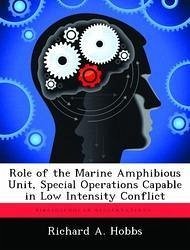This study compares the capabilities of the enhanced Marine Amphibious Unit (Special Operations Capable), MAU (SOC) with the requirements for conducting operations in Low Intensity Conflict (LIC). The focus of the study is on the improvements and expansion of capabilities of MAUs being Special Operations Capable. LIC is defined and discussed relative to the requirements for military forces operating in this environment. The capabilities of the MAU (SOC) are then compared to the requirements of LIC establish a framework for the role of MAU (SOC) in LIC operations. The principal conclusion of the thesis is that the MAU (SOC) has a role in LIC operations. Its capabilities are best served in the area of peacetime contingency operations, where its rapid response and special operations enhancements provide a unique capability for military action. The MAU (SOC) has limited capability in foreign internal defense operations, due to the eventual length of such operations. Finally, the MAU (SOC) is a viable force for use in terrorism counteraction and peacekeeping operations, but again, other units may be better suited based on the circumstances of the situation.
Hinweis: Dieser Artikel kann nur an eine deutsche Lieferadresse ausgeliefert werden.
Hinweis: Dieser Artikel kann nur an eine deutsche Lieferadresse ausgeliefert werden.







